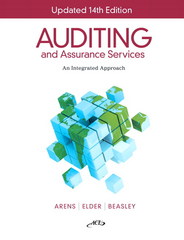



Question 2 Not yet answered Marked out of 3.00 P Flag question Formulating Financial Statements from Raw Data Following is selected financial information from General Mills, Inc., for its fiscal year ended May 29, 2016 $ millions): Revenue $16,563.1 Cost of goods sold $10,733.6 Cash from operating activities 2,629.8 Cash, ending year 763.7 Cash, beginning year 334.2 Total liabilities 16,405.2 Stockholders' equity 5,307.1 Cash from investing activities 93.4 Noncash assets 20,948.6 Total expenses (other than cost of goods sold) 4,092.7 Cash from financing activities* (2,293.7) *Cash from financing activites includes the effects of foreign exhange rate fluctuations. (a) Prepare the income statement, the balance sheet, and the statement of cash flows for General Mills for the fiscal year ended May 29, 2016. Hint: Enter negative numbers only for answers in the statement of cash flows (if applicable). Hint: Enter negative numbers only for answers in the statement of cash flows (if applicable). General Mills, Inc. Income Statement ($ millions) For Year Ended May 29, 2016 Revenue Gross profit Net income General Mills, Inc. Balance Sheet ($ millions) May 29, 2016 Total liabilities Cash Total assets Total liabilities and equity $ General Mills, Inc. Statement of Cash Flows ($ millions) For Year Ended May 29, 2016 Cash from operating activities $ General Mills, Inc. Statement of Cash Flows ($ millions) For Year Ended May 29, 2016 Cash from operating activities Cash from financing activities Net change in cash Cash, ending year (b) Does the negative amount for cash from financing activities concern us? Explain. A negative amount for cash from financing activities implies that the company is unable to pay its debts as they come due and should be interpreted negatively. A negative amount for cash from financing activities is the result of additional borrowings. Because the additional funds are invested in earnings-generating assets, this should be viewed positively. A negative amount for cash from financing activities implies that the market value of the company's long-term debt has declined and this change should be viewed negatively. A negative amount for cash from financing activities reflects the reduction of long-term debt, which is a positive sign of the company's ability to retire debt obligations. (c) Using the statements prepared for part a. compute the following ratios (for this part only, use the year-end balance instead of the average for assets and stockholders' equity): Round all answers to two decimal places. For example, asset turnover is rounded like this: 0.34567 = 0.35; all other percentage ratios are rounded like this: 0.12345 = 12.35%. (1) Profit margin (ii) Asset turnover (iii) Return on assets (iv) Return on equity










